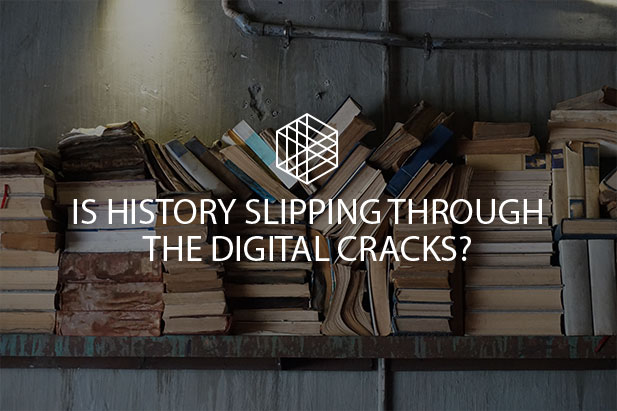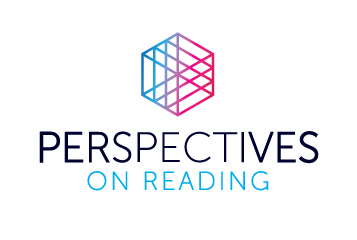Is history slipping through the digital cracks?

By Tara Gilbert, Librarian | March 2019
In this age where “everything’s at your fingertips,” “if it’s not on the internet, it doesn’t exist” (two horrible yet, ubiquitous lies). When everything’s now, now, now and yesterday’s tragedies are forgotten with today’s headlines, is it any wonder that we’ve not only neglected our history but actively ignored it? What forces are responsible, and what exactly is it we’re losing?
Robert Maynard Hutchins (Jay, Oxford Dictionary of Political Quotations, 1996)
What are special collections and why are they important?
Special collections exist in almost every single library, museum and other cultural information center in all our communities; from the rural branch with only 50,000 volumes on a dirt road to a sprawling cosmopolitan central library in San Francisco or New York. From vast university collections and small museums to tiny private collections and all the way back to impossibly large national archives, nearly all of the aforementioned institutions have boxes, shelves, volumes, serials, paintings, sketches, sculptures, photographs, correspondences, notes, audio tapes, videos, records, artifacts, data and other ephemera that haven’t made it to the internet.
Special collections are the most common place to find the world’s primary sources; documents that contain information obtained by research or observation, not taken from other books. Primary sources are still often the basis of innovation when interpreted within the context of the ever-changing views of human cultures. The 300-year-old research of Leonhard Euler on mathematical topology is now being used to study how to compress images to smaller sizes, look for patterns in genes involved in many cancers, detect fraudulent bank activities, gather neuro data collections from the human brain and teach sophisticated movements to robots. (Powell, Devin, Discover Magazine, “Shape Shifters,” October 2018.)

Without digitizing special collections, we’re limiting their availability to the collective scrutiny of creative minds with fresh ideas and eyes that are continuing to solve important problems as well as evolve our cultural experiences. It sometimes seems that the cost and effort of digitizing special collections isn’t valuable enough to make a difference. But is it? How can we truly judge this to be true?
For instance, digitizing special collections can drastically reduce the need to physically travel to remote locations to study materials. So, the effort to do the work of digitizing far offsets the costs of travelling and of missed opportunities to discover yet more applicable information for our collective understanding. Even with the special collections that have been appropriately digitized, one must often obtain special permissions to access these databases, as they aren’t simply handed over without compensation.
There exists in many young people an impatience with the old and ignorance of the value of what has shaped the world they live in. This is currently being played out in the realm of special collections throughout many libraries. The lack of recognition of the importance that special collections play is becoming ubiquitous and worrisome on many levels. Salvaging obscure knowledge in special collections has many intangible future applications that cannot yet be predicted, nor can an economic value currently be applied to their preservation.
How much is digitized?
It would be nearly impossible for anyone to guess the percentage of special collections that has been digitized. Some institutions have huge budgets to pay armies of librarians and archivists to delicately photograph, scan, digitally enhance and commit these ‘documents’ to databases along with detailed cataloging. Some institutions have no budgets whatsoever for this task, and their collections can only be accessed by physically traveling to that library, museum or archive to view or study.
Since digitization is so costly and so rare – yet the general public expects it to already be done – several libraries across the U.S. with special collections were contacted during the development of this piece in an attempt to find out how much is digitized. Here are those findings:
| Institution type | % of textual data digitized | % of photographs digitized |
| University library | 1-2% of special collection in general, due only to grant-funded projects | |
| City college library I | 0% | 60% of photographs; 100% of 2 antique periodicals |
| City college library II | 0% | 0% |
| Public library I | Very few print resources, and a small number of maps | 10,000 photographs, slides and postcards |
| Public Library II | 8% | 60% |
| Public library III | Librarian could not provide a percentage, only that there are 64,281 linear feet of documents. Not all of this material has been digitized. | “Most” of the photographs have been digitized, yet no percentage could be arrived at since some of them are also in the regular collection or were taken recently to advertise library programming. |
As evident by the information in the table, there are several factors at play. Almost no institution was able to pinpoint an exact amount of material that had or had not been digitized, unless, of course, there was absolutely nothing digitized. This is for a myriad of reasons.
In some collections, there are so many items in the regular collection that have been already digitized (i.e. ebooks, online journals, etc.), the overlap was too acute to tease out the true numbers of actual special collection items, since there is no difference in the way they’re cataloged. In some cases, certain parts or items in their special collections were most likely only digitized by serendipity, meaning they digitized them for an interlibrary loan request or some such other situation and decided for economy’s sake to keep the files instead of deleting them.

Things get even harder to track because special collections by their very nature are disorganized. There are instances when one has a box full of letters, pictures and journals and only the box is cataloged, not each individual document in it, and, of course, only a few letters in the box had been requested to be scanned. As one can clearly deduce, this inherent anomaly that special collections present exponentially compounds the extreme difficulty of organizing and tracking with any real accuracy the percentage or number of items that have been digitized. Because cataloging was designed to identify specific books, when you have a situation where you are cataloging a box of different materials, an image, folio or other article, it becomes more difficult to define within the parameters of information categorization.
None of this is very surprising.
(Miller, All Text Considered, “The American Archivist,” v. 76, n. 2, 2013)
Barriers to digitization
There are multiple barriers to digitizing special collections and also making them widely available to any audience. The first is obvious: availability of funds to catalog, maintain, preserve and, last of all, digitize. Librarians, curators and educators everywhere can work harder to promote their special collections in the eyes of civic and federal funding bodies. The second barrier is copyright laws, which prohibit access and use of items. And third is the general attitude toward the subject material and its currently perceived social value.
Policies regarding the items we do take the time to digitize are very limited according to the zeitgeist, or the lens of our current value system. What may not be “relevant” or fit into our zeitgeist today may be invaluable tomorrow, next year or 100 years from now. In our disposable “now culture,” do we throw away our collective history because it’s not immediately popular and seemingly irrelevant? Can you imagine a world that threw away the writings of Christine de Pizan because she happened to “only be a woman” in the 14th century? No, we don’t want to throw away our special collections just because our zeitgeist doesn’t take a current interest.

To illustrate this point more clearly, we must also consider the standard practice of selective digitization inherent in our digitization policies. At almost every library and museum, there are very specific polices that guide what librarians, archivists and curators are allowed to spend staff time digitizing. You can look at almost any procedure manual relating to this, and you’ll find that there must be a “current interest that a wide audience will use.” This, in essence, omits all obscure or unpopular scholarship. This could be due to ignorance of the subject matter or ideas that don’t fit in the paradigms or dogmas that exist in our cultures currently, or it may not be clearly defined enough through the limited capacity of our cataloging practices what the collection or item actually is.
How do we ensure the survival of our primary sources?
Perhaps our value system is migrating to places that no longer value things like history or tradition, and that’s fine, but what about our collective body of knowledge? What about the struggles and trials our ancestors endured? What brought us to THIS place, with THESE laws and what forces were there in our past to shape our math, science, psychology or even our DNA?
Thomas Jefferson (Mattson, Creating a Democratic Public, 1998)
If we lose our history, we lose ourselves. Even the misplacement of the smallest molecule in a strand of DNA can create a major mutation in future generations; is our collective consciousness any different? How can we determine today what will be important tomorrow if we leave out part of our yesterday?
References
- Hutchins, Robert Maynard (1899-1977) Jay, A. (1996). Oxford dictionary of political quotations. Oxford: Oxford University Press.
- Jefferson, T. (1816, January 06). Founders.archives [From Thomas Jefferson to Charles Yancy]. Monticello, Charlottesville, VA.
https://founders.archives.gov/documents/Jefferson/03-09-02-0209
- Kahle, B. (2017). Transforming our libraries from analog to digital: a 2020 vision. Educause Review.
- Miller, L. (2013). All Text Considered: A Perspective on Mass Digitizing and Archival Processing. The American Archivist, 76(2), pp.521-541.
- Powell, D. (2018, October 1). Welcome to the Weird Mathematical world of topology. Discover magazine.



Bravo to an excellent article on a critical issue.
Great Article. I agree with the everything you said
Awesome article! I enjoyed reading it.
Awesome Tara! Excellent information! Congratulations!
Wonderful and congratulations! So proud of you. Great insights.